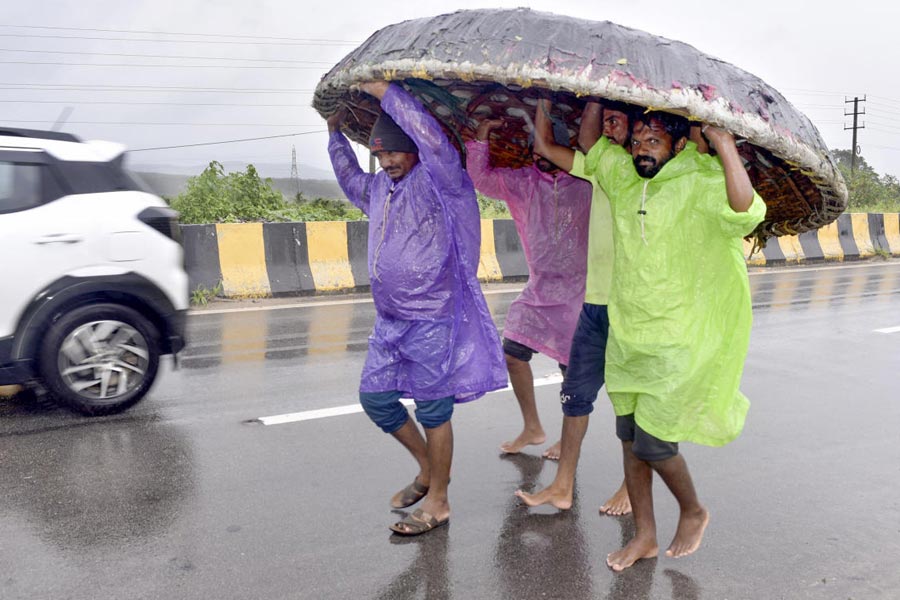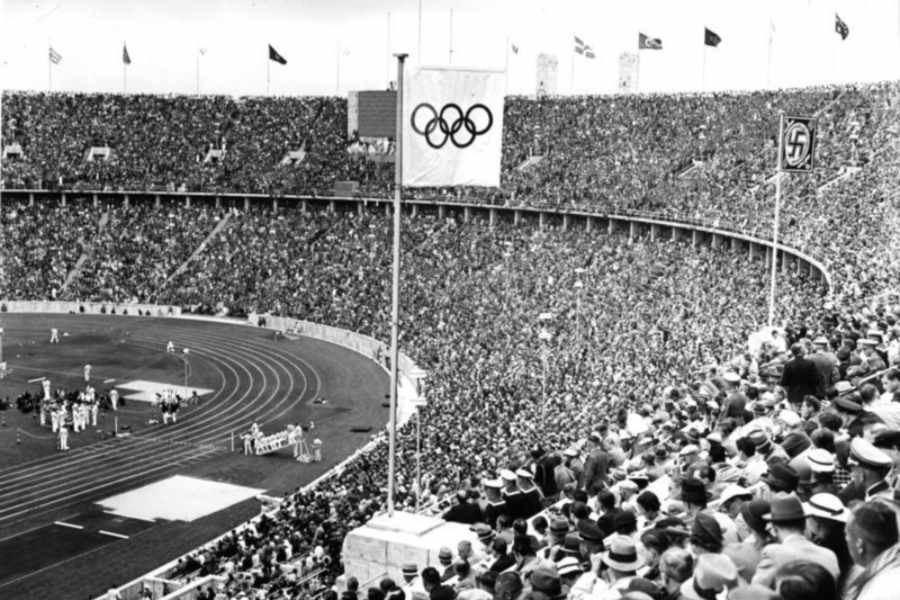A group of eminent personalities from Calcutta or associated with the city has written a letter to the chief minister to protect its architectural heritage from rampant destruction.
Written at the initiative of novelist Amit Chaudhuri, the letter urges the government to save buildings that "add up to a city's collective inheritance and history" and proposes a few measures.
It has been signed by economist Pranab Bardhan, economist Kaushik Basu, historian and MP Sugata Bose, artist and MP Jogen Chowdhury, architect Partha Ranjan Das, economist and visitor to the city Esther Duflo, environment activist Bonani Kakkar, Intach state convener G.M. Kapur, vice- chancellor of Presidency University Anuradha Lohia, artist Chitttovanu Majumdar, film director Aparna Sen, director East India, British Council, Sujata Sen, who signed as member of West Bengal Heritage Commission, photographer Dayanita Singh and director of Prasar Bharati Jawhar Sircar.
The letter has been copied to the mayor, the commissioner of the Calcutta Municipal Corporation (CMC), the chief secretary and secretary, information and cultural affairs.
Economist and Nobel laureate Amartya Sen, who does not sign collective letters, has responded to Chaudhuri with a letter (see box).
The letter to the chief minister talks about the city's unique "modernity" that is recorded not only in the landmark architecture, but also in the residential buildings and the paras.
"Calcutta is one of the great cities of modernity, and Asia's first cosmopolitan metropolis... its cultural inheritance is contained not only in its literature, cinema, art, and music, or in its political and intellectual history, but palpably in its lived spaces and its architectural ethos," the letter says. Not only in the " rajbari mansions" of north Calcutta and the grand colonial buildings of central Calcutta, "but the houses in which people have lived... Bakulbagan, Hindustan Park, Kidderpore, Paddapukur Road, Bhowanipore, Sarat Bose Road, and Ganguly Bagan...."
Protection of such neighbourhoods is a tough task in a city where old houses are regarded as wasted floor spaces. But the petitioners are aware of the needs of a rapidly spreading city. They suggest measures to ensure that a building is not destroyed, while stressing that new development should not necessarily be opposed.

lost in the wonders of the city and its architectural heritage

The letter proposes that paras with old buildings should be declared "heritage precincts" and the West Bengal Heritage Commission and the CMC Heritage Committee, which "lack teeth", should be empowered.
But its most practical solution is the transfer of development rights (TDR).
TDR, suggested by architect Partha Ranjan Das for Calcutta, is already in use in some developed countries and in India, in Mumbai. Successful in varying degrees, it allows the owner of a house to sell the equivalent of his land value to the buyer, who can build elsewhere. The ownership does not change.
Das explains the principle of TDR. Suppose an old house is built on an area of 5,000sq ft in Ballygunge, but a multi-storeyed with 50,000sq ft floor space could be built in its place. Under TDR, the buyer would pay the owner an amount keeping in mind the development potential of the house, but since the house needs to be preserved, it would not be brought down and the funds would be used for its maintenance, even as the buyer would get an amount of land, say, in Rajarhat, that would be adequate in value for the price he has paid.
TDR has been proposed to the CMC several times, but has not been adopted.
Das thinks that in Calcutta, the individual houses may not have tremendous character always. Protecting old neighbourhoods is a better idea.
Chaudhuri, however, thinks that the individual houses too are unique. Lovingly, he goes over the features that make them unique: the red oxidised stone floors, Venetian/ French shuttered windows (the French windows always green), long verandahs, open terraces, ventilators carved into the walls, each different, like fingerprints of a house, long, rectangular strips of glass fronting the stairwells, an art deco feature, like sunrise motifs in the balcony railings. "There's a family resemblance, but each house is different," says Chaudhuri.
"This mixture of Bengali and European elements has created the middle-class lived spaces unique to Calcutta. You don't find it anywhere in the world," says Chaudhuri. In Mumbai, which invites a comparison, the buildings are neo-Gothic or Indo-Saracaenic, he adds. To call Calcutta's buildings "old' is paradoxical as they represent the city's modernity, he says.
But this Calcutta is going, suffering an opposition of vested interest and righteous prejudice, which labels a concern with architecture as "elitist". Once it goes, it will not be back. "You can't archive architecture," says Chaudhuri.
The letter, hopes G.M. Kapur of Intach, one of the signatories, will attract the attention of the authorities, who will be spurred into action, for the law on heritage remains on paper. He also stresses that owners of heritage buildings in the city are given no incentives to maintain their property.
TDR is a way out, feels Kapur. "Intach provided CMC with a draft of the legislation on protecting heritage buildings. 1997. But certain recommendations, such as incentives to the owners, waiver of property tax and TDR were not included," Kapur adds.
Artist Jogen Chowdhury, another signatory, says Calcutta and Bengal lack the motivation to conserve heritage. "Both the public and the government lack it, but the government is a reflection of the public."
An effort such as the letter is a primary responsibility for the people, based on the understanding that Calcutta has a unique character. "The need to protect heritage should enter the Bengali mind. If we do not do this, we will be accepting that which goes on."
The artist, an MP from the ruling Trinamul Congress, adds that he expects the chief minister to respond positively to the letter. "Because she has taken several positive steps and taken them fast."
Two officials copied in the letter, the mayor and the secretary, information and cultural affairs, said they are yet to get the letter. The commissioner of CMC was not available for comment.











